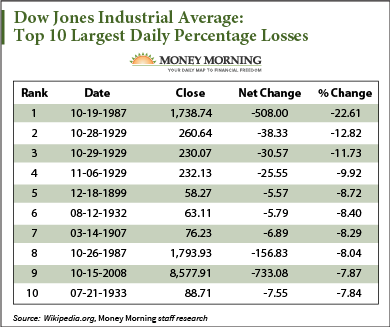The stock market crash of 2008 was considered the worst economic crisis since the advent of the great depression. On September 29, 2008, the Dow Jones Industrial Average, an important indicator of the stock market, had dropped 777.68 points in overall trading. This was a significant 4 percent drop in one day which followed for the next year, totaling a 50 percent drop in the Dow average in March of 2009. September 29 had been dated as of the 3rd most significant single drop the Dow has ever had in one day, only to be trumped by recession drops in 2018.
Going on to how the 2008 stock market crash had taken place, in 2007 the dow had opened the day with about 12,500 a record high for that year. During that time a lot of people began voicing their growing concerns over the mortgage crisis. Housing prices had been steadily increased for decades, and during 2008, they had reached a ridiculously high inflated rate for anyone who wanted to be a homeowner. The federal government tried to prevent the subprime mortgage cost by liquidating the expenses and buying the banks who had made this lousy investment. However, before a large scale buyout could be commenced, Congress had rejected this bill and had let the prices continue to rise, not seeing the consequences that would unfold.

The crash in 2008 had
paralleled the stock market crashed in 1929, around the great depression
This stock market crash had its primary origins in the housing market, a symbol of America prosperity. For long since 2008, at least since the 1930s, the federal policy had been to provide unrelenting support to the homeownership market, even marketing the idea of a suburban family. After world war 2, the GI bill offered veterans cheap home loans, so that they could avoid a prewar slump and that they could develop the lands around the cities. This mortgage market had only since then been increasing at an exponential rate, which is what led to the 2008 stock market crash. Between 2001 and 2007, mortgage debt had risen nearly as much as in the whole rest of the nation's history. This explosion meant that more money had to be loaned when there wasn't enough money to satisfy it. These risky investments had eventually led to the financial crisis that had paralleled the great depression, especially in the amount of money lost. Crashes like these are trying to be avoided, but the idea of a perfect suburban life that still too many people have can lead to an even worse financial crisis in the years to come. Let this be a lesson to those who take out loans they have no business ever paying off.

I enjoyed reading your post, and I liked how you compared the 2008 financial crisis to the Great Depression. I also liked how you gave specific numbers regarding the movement of the Dow Jones Industrial Average. I thought it was quite interesting how there was not really a large, one-day drop. Compared to Black Monday in 1987 and the crash of 1929, which had one-day percentage losses of 22.61% and 12.82% respectively, the market movement in 2008 was quite gradual. However, at one point, the DJIA was down 54% from its October 9, 2007 high.
ReplyDeleteSource: https://en.wikipedia.org/wiki/List_of_largest_daily_changes_in_the_Dow_Jones_Industrial_Average
5/3/2019